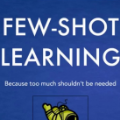Few-shot learning has drawn researchers' attention to overcome the problem of data scarcity. Recently, large pre-trained language models have shown great performance in few-shot learning for various downstream tasks, such as question answering and machine translation. Nevertheless, little exploration has been made to achieve few-shot learning for the fact-checking task. However, fact-checking is an important problem, especially when the amount of information online is growing exponentially every day. In this paper, we propose a new way of utilizing the powerful transfer learning ability of a language model via a perplexity score. The most notable strength of our methodology lies in its capability in few-shot learning. With only two training samples, our methodology can already outperform the Major Class baseline by more than absolute 10% on the F1-Macro metric across multiple datasets. Through experiments, we empirically verify the plausibility of the rather surprising usage of the perplexity score in the context of fact-checking and highlight the strength of our few-shot methodology by comparing it to strong fine-tuning-based baseline models. Moreover, we construct and publicly release two new fact-checking datasets related to COVID-19.
翻译:少见的学习吸引了研究人员的注意力,以克服数据稀缺的问题。最近,大型的预先培训语言模型在对诸如问答和机器翻译等各种下游任务进行少见的学习方面表现出了杰出的成绩。然而,几乎没有进行什么探索来对事实核对工作进行少见的学习。然而,事实核对是一个重要问题,特别是当在线信息量每天都在成指数增长时。在本文中,我们提出一种新的方法,利用语言模型的强大传输学习能力,通过一个易懂分数。我们方法中最显著的优势在于它的能力是少见的学习。由于只有两个培训样本,我们的方法在多个数据集的F1-Macro基准上已经超过主班基线10%的绝对值。我们通过实验,对在事实核对中相当令人惊讶地使用难懂分数的准确性进行实证,并通过将它与强有力的微调底线模型进行比较来突出我们微分数方法的强度。此外,我们建造并公开发行了两个与COVI-19D相关的新的事实核对数据集。



